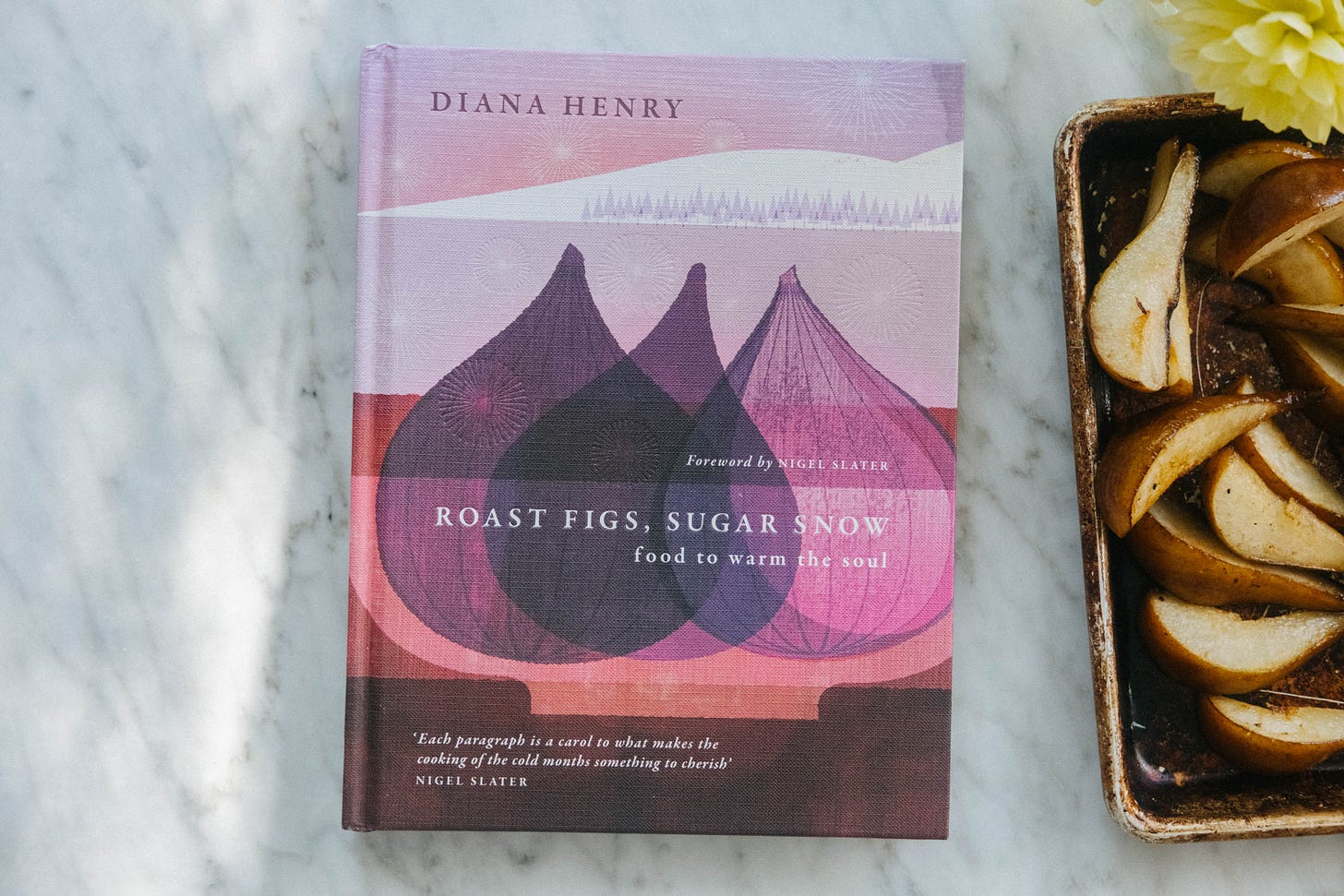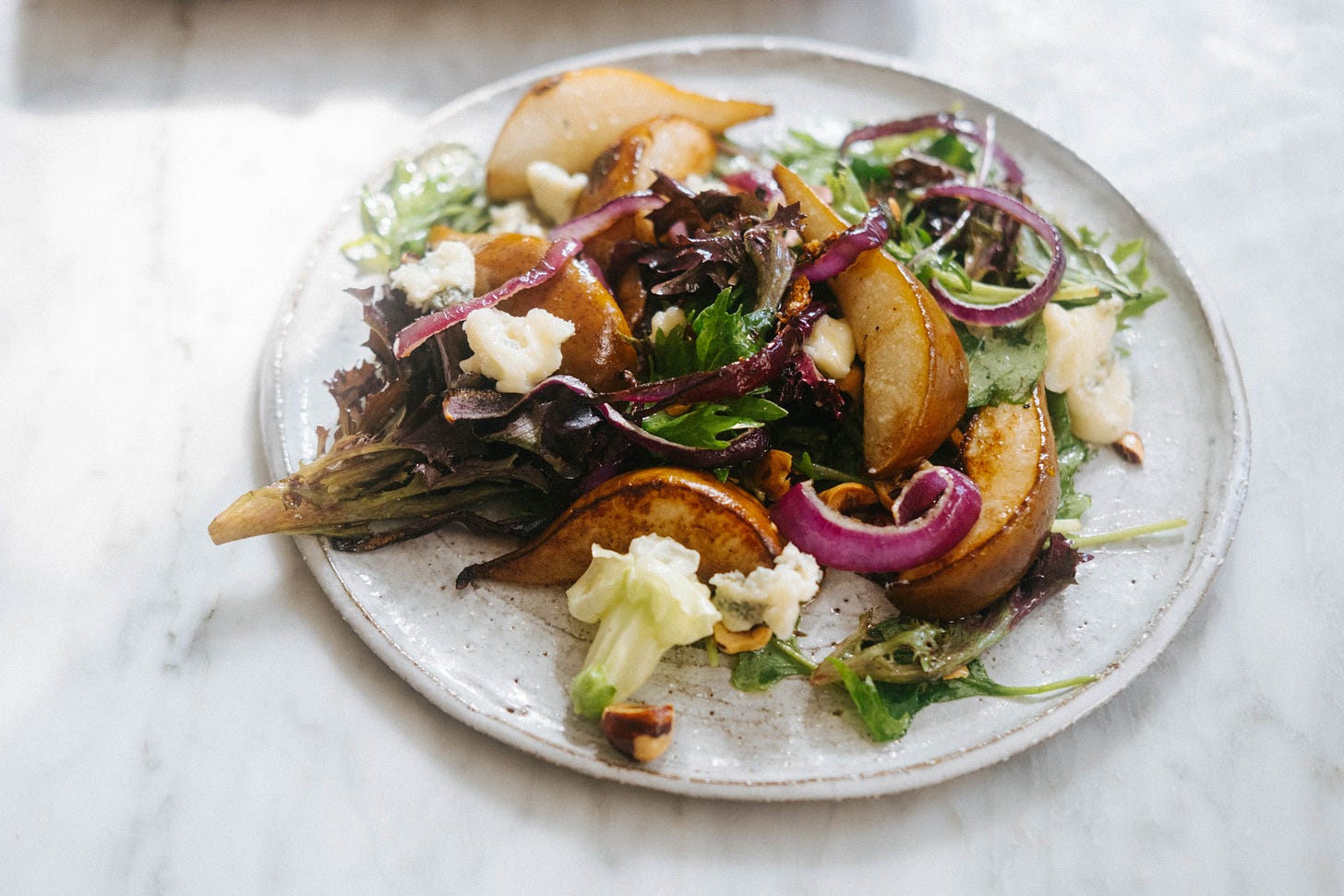Welcome to To Vegetables, With Love, a celebration of a vegetable life, less ordinary. As always, I appreciate all of you being here! This week’s recipe is unlocked for all.
Click here to see your subscription options. As always, I appreciate all of you being here!
If you’re looking for a newsletter recipe, see my Substack recipe archive here. For recipes with a 🔒 symbol, you will need a paid subscription. Everything else is free.
🥦 My new cookbook, Tenderheart is for cooking vegetables, all year round. Pick up your copy here. It is also mostly vegan (or vegan-izable) and gluten-free adaptable.
🙏🏼 A reminder that if you love 💚 Tenderheart, leave it a review on Amazon (whether you purchased it there or not).
I have a scrapbook with recipes pulled out from English newspaper magazine supplements from the early to mid 2000s. We were living in London at the time, and even though my job in public relations didn’t leave me a lot of time to cook, I was beginning to learn the language of recipes and how to use them. In that scrapbook, there are recipes for a wide range of dishes that seemed to indicate my burgeoning curiosity about flavours: yogurt and elderflower panna cotta with gooseberries, rich lentil moussaka, strawberry and lavender pie, fasolia gigantes, catalan honey-baked aubergines, and Nigvziani badrigiani (aubergine stuff with walnuts). While I have not cooked most of these recipes, this is not true of the first recipe in the scrapbook. Pulled from The Daily Telegraph on 10 July 2005, this bulgur and spinach pilaf with roast tomatoes and labneh is one that I have cooked many times. It is deeply comforting - aromatic grains layered with bursting tomatoes, sweet onions, wilted spinach and thick, creamy labneh. While I was not well versed on food writers back then, it turns out I already knew how to pick out a good recipe because this one was written by one of the best, the inimitable Diana Henry.
When I am asked about which food writers and cookbook authors I admire most, the first name off my tongue will always be Diana Henry. She is prolific yes, having written 12 (!!) cookbooks – including one of my favourite cookbooks of all time, How To Eat A Peach – and has written a weekly column in The Sunday Telegraph for 20 years. The flavours and textures in her recipes are always spot on, perfectly balanced and harmonious. But what sets Diana apart from other food writers, and what speaks to me most resonantly, is something that is at once intangible yet acutely present in all her work – heart. When I read Diana’s cookbooks, or cook her recipes, I immediately understand who she is and why she cooks the way she does. Diana loves food, that much is clear from her immense body of work, but I get the sense she also feels the food. As Diana writes in the new foreword of her recently re-released Roast Figs, Sugar Snow, “A dish is more than a collection of ingredients. It comes from somewhere, contains taste that make you think of the sun or snow, and may be a classic of home-cooking prepared every day in some corner of the world. In short, food comes with associations, with history, and it can take us places”. And I am always prepared to go wherever Diana takes me.
The recipe I’m sharing today is indeed from Diana’s book Roast Figs, Sugar Snow, which was first released 20 years ago and has now been re-issued in a stunning revised package along with 7 new recipes. This evocative book is all about winter, the snug flavours and cozy meals that warm our tummies and soothe our souls during the cool, dark months. There are recipes devoted to ripe and ready cheese, the ‘earthly pleasures’ of pumpkins, squash and legumes, and winter vegetables. I love the focus on winter fruits, with one chapter devoted to apples, pears and quince, and another to purple-hued gems of plums and figs. It ends with a whole chapter dedicated to maple syrup, inspired by her visit to Vermont during sugaring season. Roast Figs, Sugar Snow is an ethereal, transportive collection which I’ll treasure all year round, but particularly when I’m looking to conjure a sense of home and togetherness.
* a note for vegetarians: Roast Figs, Sugar Snow does contain meat recipes.
This week:
Cook edamame pesto pasta (NYT gift link) with that bag of frozen edamame pods that I know you have stashed in your freezer. Edamame beans are young soy beans, which means they are packed with protein. Or try this dumpling stir-fry, for an unexpected, pantry friendly weeknight dish. I’ll be making this vegetarian chili made entirely with canned beans this week!
Eat your greens. My latest recipe on ABC Everyday, is a green salad with sauce gribiche. I consider Sauce Gribiche as an egg salad with attitude. It’s a wonderful way to make a green salad more substantial and heartier.

Salad of pears, hazelnuts and cashel blue cheese
© by Diana Henry, from Roast Figs, Sugar Snow, excerpted with permission by Hetty Lui McKinnon for To Vegetables, With Love.
From Hetty: Sweet pear and salty blue cheese are a timeless pairing and here they are brought together with aplomb, teamed with silky roasted onions, crisp toasted hazelnuts and a simple-yet-punchy vinaigrette to create a deeply satisfying winter salad. I loved it and my kids loved it too. It reminded us of a pear, blue cheese and rocket (arugula) pizza which we ate at Vacanza in Surry Hills, Sydney many winters ago (sadly it’s not on the regular menu, it was a special).
From Diana: The Irish cheese Cashel Blue is one of my favourites. It’s a rich, creamy blue and I always think it tastes slightly of smoky bacon. If you can’t get hold of it, use Gorgonzola or Dolcelatte instead. This dish is based on a classic French bistro salad, for which they generally don’t sauté the pears or include roast onion, so go down that route if you’re feeling lazy. Apples can be used instead of pears, and walnuts instead of hazelnuts.
serves 6
for the salad
1 small red onion
olive oil
3 pears, not too ripe
30g (1oz) unsalted butter
150g (5½oz) salad leaves, a mixture of watercress, chicory and baby spinach
75g (2¾oz) hazelnuts, lightly toasted but not skinned, halved
175g (6oz) Cashel Blue cheese, crumbled
sea salt flakes and freshly ground black pepper
for the dressing
2½ tsp cider vinegar
1 tsp Dijon mustard
½ tsp caster sugar, or to taste
4 tbsp hazelnut oil, or walnut oil
1 tbsp extra virgin olive oil (fruity rather than grassy)
Preheat the oven to 180°C fan (375°F), Gas 5.
Halve the red onion and cut it into crescent-shaped slices. Put into a small ovenproof dish, drizzle with olive oil and season with salt and pepper. Roast in the preheated oven for 20–30 minutes, or until soft with slightly caramelized tips. Keep warm.
Make the dressing by whisking all the ingredients together. Season.
Halve and core the pears, then cut them, lengthways, into slices 0.75cm (¼ inch) thick. Melt the butter in a frying pan and quickly sauté the pear slices on each side until golden. Don’t overcook them, they should still hold their shape.
Toss the salad leaves with the nuts, using most of the dressing, then divide between 6 plates. Add the pear slices and warm onion and scatter with the cheese. Drizzle each plate with the rest of the dressing and serve.
Credit: © Recipe excerpt from Roast Figs, Sugar Snow by Diana Henry, Aster 2023
‘Rien en n’est perdu dans la noix, sauf le bruit qu’elle fait en se cassant.’ ‘Nothing is wasted in the nut, except the sound it makes when cracked.’ saying in south west france








Like you, I’m always ready to go where ever Diana takes me -- I appreciate her voice in food.
Hazelnuts have a special place in my heart and history. I spent some summers in the Austrian mountains where my mother grew up. There were hazelnut trees a plenty, and as children we smashed the nuts with rocks to devour the raw nuts inside the shell. This recipe sounds delish.